Have you ever stopped to think about how much fluoride is in your water? While fluoride has some health benefits, such as reducing tooth decay, too much of it can be harmful.
Unfortunately there is no way of removing fluoride from water for free, but we listed all the solutions, including the most cost-effective ones. If you’re looking for ways to reduce or remove fluoride from your water, read on!
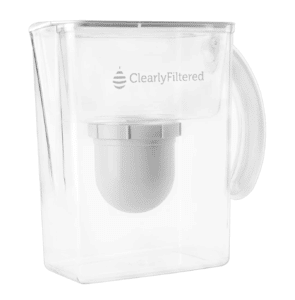
- Process: Affinity Technology
- Fluoride Removal Percentage: 99.5%
- Warranty: 1-year Warranty
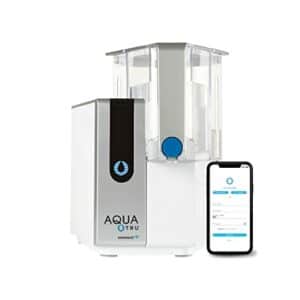
- Process: Reverse Osmosis
- Fluoride Removal Percentage: 99.75%
- Warranty: 1 Year
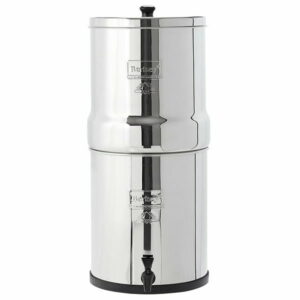
- Process: Gravity Filter
- Fluoride Removal Percentage: 96%
- Warranty: Lifetime Warranty
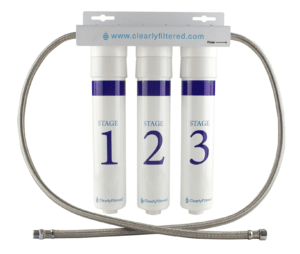
- Process: Reverse Osmosis
- Fluoride Removal Percentage: 90.7%
- Warranty: Limited Lifetime Warranty
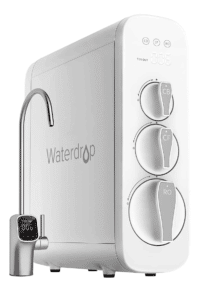
- Process: Reverse Osmosis
- Fluoride Removal Percentage: 99.9%
- Warranty: 1 Year
What is Fluoride and How Does it Get into Water?
Fluoride is a mineral compound found in rocks, soil, and water. It occurs naturally in all water sources, including rivers, lakes, and the ocean. It can also be formed synthetically when fluorine chemically interacts with metals like sodium.
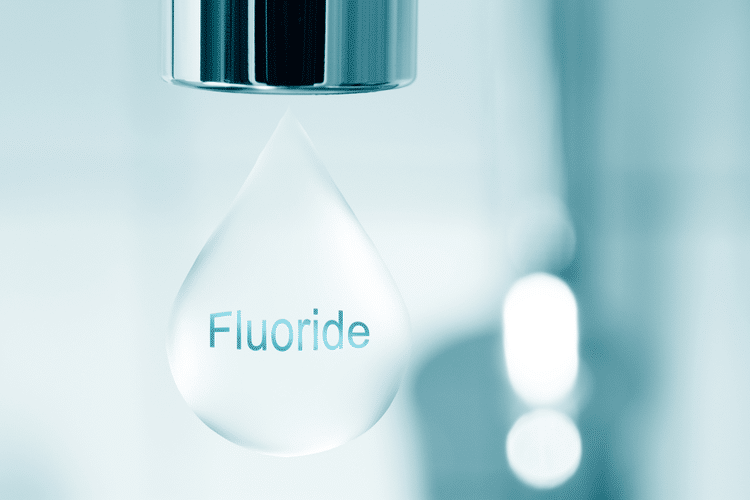
Therefore, there are many ways it can make its way into our drinking water, but for the last 75 years, the main way has been community water fluoridation. Since fluoride reduces the rate of tooth decay in both children and adults by 25%, municipalities have been adding it to the public water supply.
However, the level of fluoride added to prevent dental problems has never exceeded the upper limit set by the Environmental Protection Agency (EPA). According to the EPA, fluoride levels shouldn’t surpass 4 mg/L in drinking water, while the Public Health Service says that 0.7-1.2 mg/L is enough to protect our teeth.
So, if fluoridation is completely safe, when does fluoride reach dangerous levels? Well, some private wells draw water from underground sources located in or around soil and bedrocks. When these are abundant with fluoride compounds, there’s a chance that your drinking water will have excessive fluoride levels.
In addition, although the EPA strictly regulates public water systems, there’s still a chance of contamination due to natural disasters or structural damages to the piping system. Subsequently, fluoride levels might peak.
Health Effects of Drinking Fluoride Contaminated Water
Several health effects have been linked to drinking fluoridated water, including an increased risk of bone fractures, skeletal fluorosis, arthritis, and muscle damage. Some studies have also suggested that fluoride may interfere with the body’s ability to produce the thyroid hormone.
Therefore, ensuring that your drinking water does not contain excessive fluoride levels is vital. There are two ways to do this. You can check with your local water supplier to determine if your water has been fluoridated and how much fluoride it contains, or you can run your own tests.
How to Remove Fluoride From Water
Although fluoride is often added to water supplies to improve dental health, too much of it can be harmful. Fortunately, there are a couple of ways to remove it from your water.
However, there’s no really cheap way of doing this effectively. These methods can be quite expensive, especially if you’re looking for large scale fluoride water treatment.
Here are the best methods to remove fluoride from water:
- Reverse osmosis water filters
- Distillation
- Adsorption
- Anionic exchange
1. Reverse Osmosis Water Filters
Water filters are the most effective way of removing fluoride from water, and reverse osmosis systems are some of the best water filters for fluoride. A reverse osmosis system can remove 90 – 99% of fluoride in water.
Reverse osmosis (RO) is a purification method that pushes water through a semi-permeable membrane that has 0.0001-micron pores. Thanks to that microscopic pore size, fluoride get stuck in the membrane and is flushed out with wastewater.
RO is the safest and most effective way to get rid of dangerous pollutants such as fluoride. However, due to its high removal capability, the membrane doesn’t allow healthy minerals to pass through either. Therefore, it’s important to either purchase an RO system that features a remineralizer to add back the lost minerals into the water or use a separate RO mineralizer.
Here’s a comparison table for fluoride water filters:

- Process: Affinity Technology
- Fluoride Removal Percentage: 99.5%
- Warranty: 1-year Warranty

- Process: Reverse Osmosis
- Fluoride Removal Percentage: 99.75%
- Warranty: 1 Year

- Process: Gravity Filter
- Fluoride Removal Percentage: 96%
- Warranty: Lifetime Warranty

- Process: Reverse Osmosis
- Fluoride Removal Percentage: 90.7%
- Warranty: Limited Lifetime Warranty

- Process: Reverse Osmosis
- Fluoride Removal Percentage: 99.9%
- Warranty: 1 Year
If you’re specifically looking for water pitchers, check our guide to water filter pitchers that removes fluoride.
2. Distillation
Distillation is another way to cheaply remove fluoride from water. In distillation, the water is boiled until it’s all gas, and the steam is captured in another container. When the steam cools down and returns to its original container as water, many contaminants, including fluoride, are gone since they don’t have anything to hold onto in the gas state.
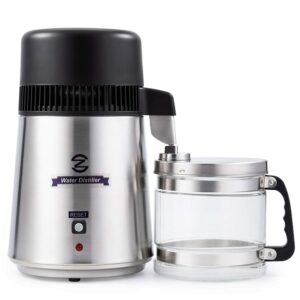
Distillation is a widely-used method in industrial-level water treatment, and most bottled water brands use it to purify their products. Of course, industrial-grade distillers aren’t accessible (or cheap) but there are pretty effective countertop distillers you can buy.
Although these countertop units can only produce a limited amount of water in a given day (mostly a gallon in four hours), they should be able to provide clean drinking water for smaller households. Moreover, they are the most affordable way to get rid of fluoride.
3. Adsorption
The adsorption method entails a filter media that can adsorb molecular contaminants upon contact. These media can vary from activated alumina to bone charcoal (a non-vegan option) and, regardless of the type, are very effective against anions (negatively charged ions) like arsenic and fluoride.
However, despite its effectiveness, it’s also a very complicated process in which the pH of the water and the presence of other anionic elements might affect the success of removal. Therefore, it’s difficult to find its applications in household filtration systems.
That said, you may still conduct your own research and contact trusted water filtration companies to inquire whether they happen to have a product that fits the description and that has the relevant NSF certifications.
4. Anionic Exchange
Water softeners use the technique of ion exchange, which often only replaces positively charged ions (cations) like calcium and magnesium with sodium with the help of resin beads. The anion exchange process, on the other hand, replaces anions like arsenic and fluoride.
However, anionic exchange is quite expensive, and anion resins are hard to come by for household use. Therefore, this technique is mostly used in industrial processing.
Lastly, remember that water softeners aren’t anionic exchange devices and can’t remove fluoride even though they utilize ion exchange.
How to Measure Fluoride Levels in Your Water
The easiest way to measure fluoride levels in your water is to purchase a water test kit online or from a hardware or home improvement store. These kits typically use a simple drop-test method.
To use the kit, you will first need to collect a sample of your tap water in a clean container. Once you have collected the water, follow the instructions that come with the kit to add the appropriate number of drops of test solution.
After you’ve added the test solution, compare the color of the water to the color chart included with the kit. The kit will provide an estimate of the fluoride levels in your water based on the color match.
Although getting a home water test kit is the easier method, the best way to assess whether your water has fluoride is to have it tested in a qualified lab. Your local health departments might offer some help, but sending a water sample to an EPA-certified lab is the fastest way to do it.
While it can be more expensive than purchasing a kit, this is the most accurate test method. Once you have the test results, you can take steps to filter out the fluoride if necessary.